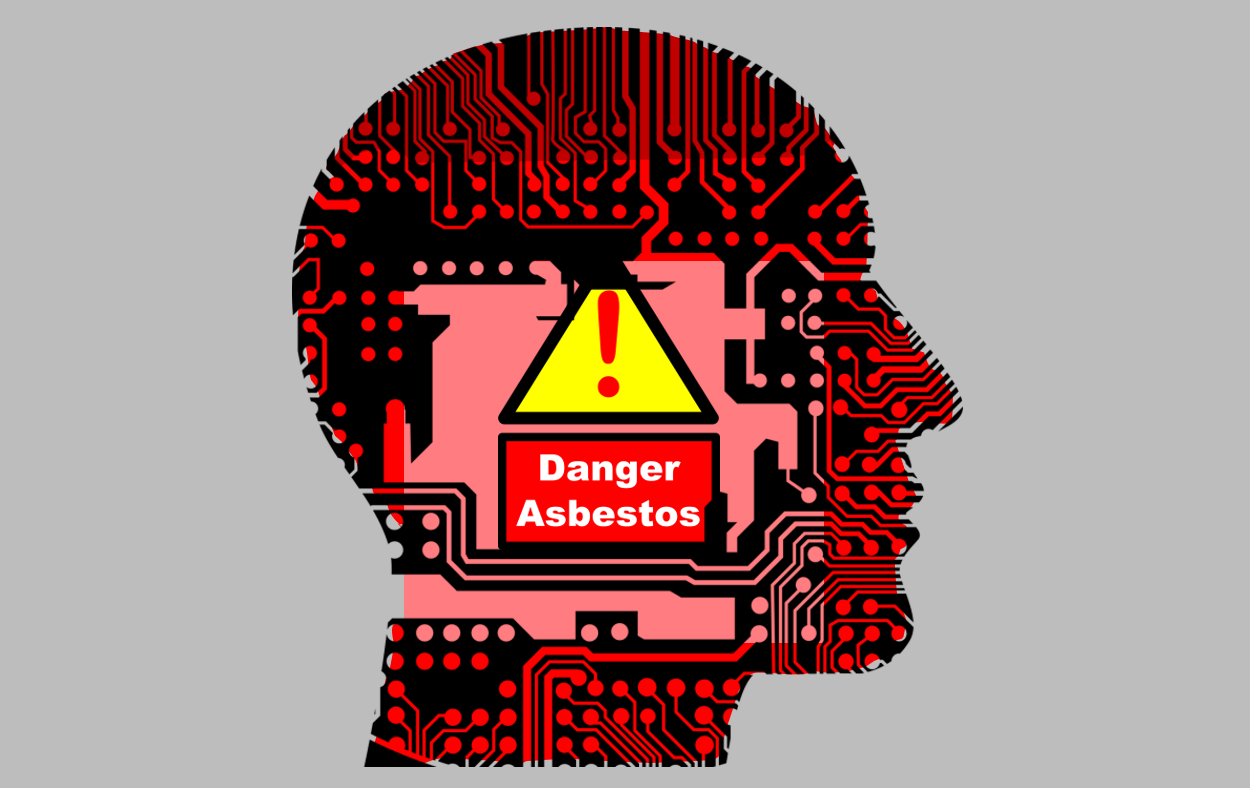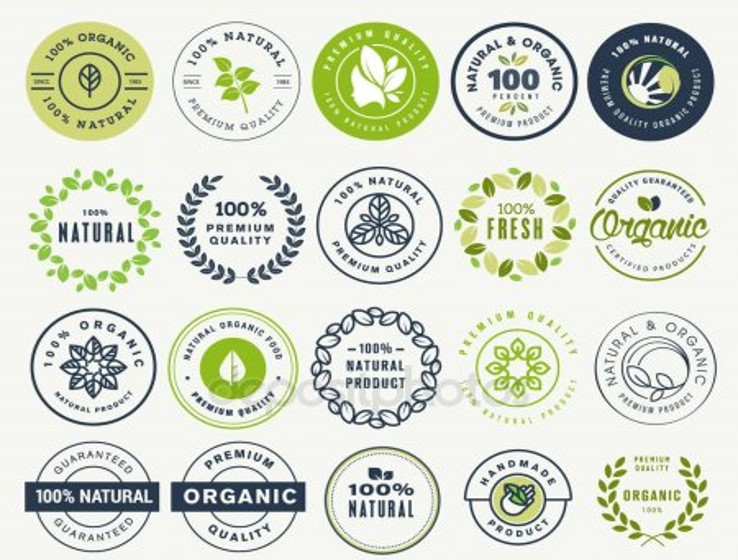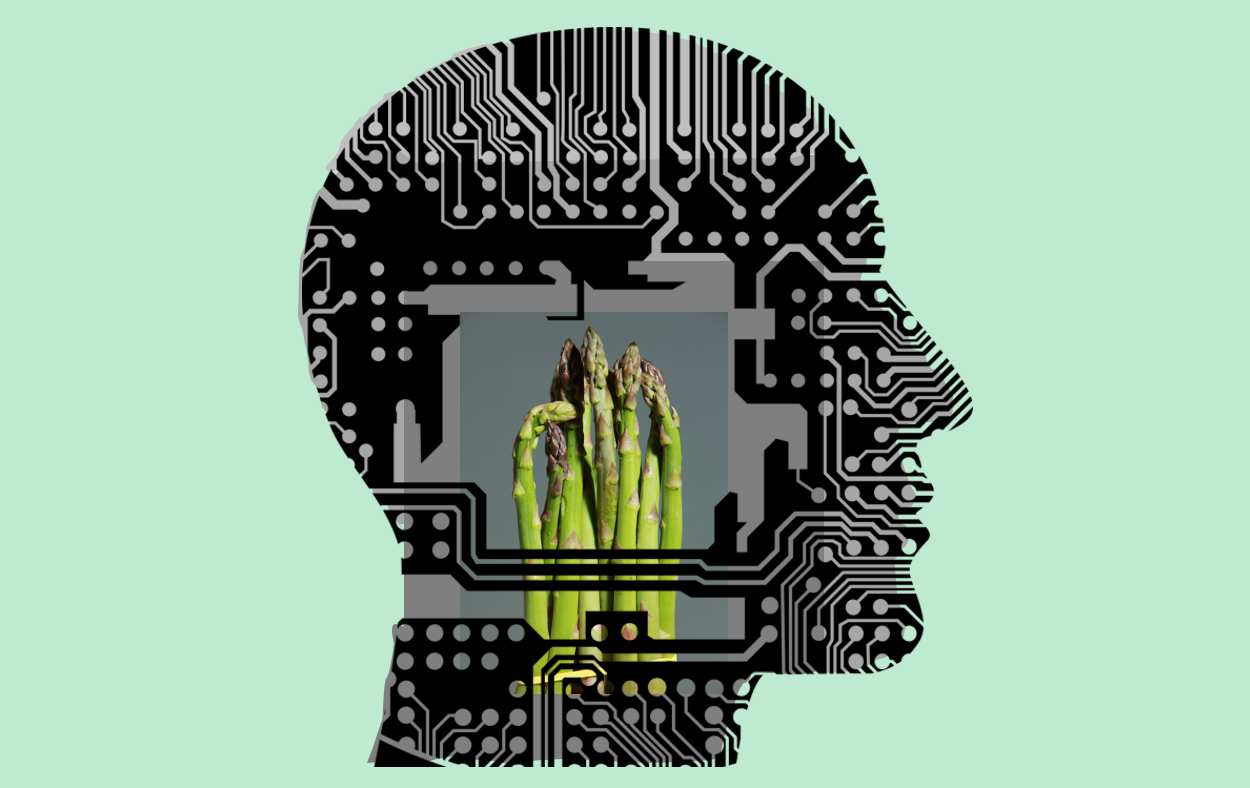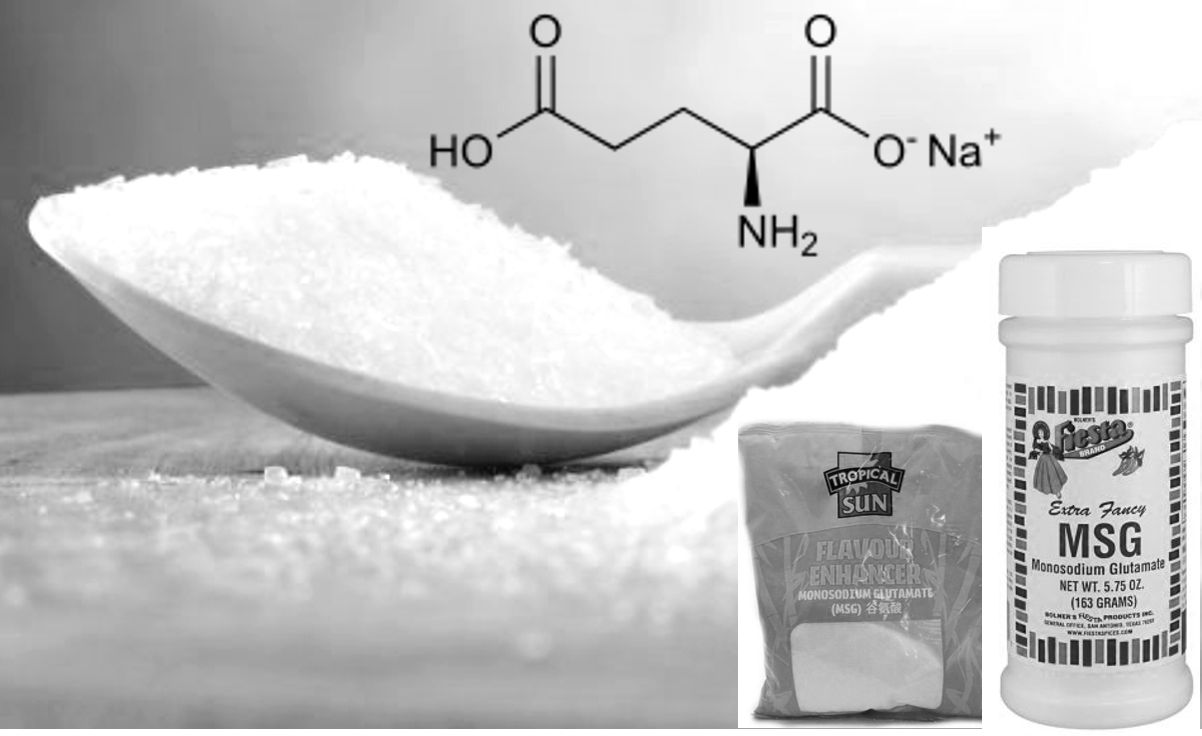Welcome to Ask a Scientist, where we answer questions from our readers on a wide range of scientific topics. Got a scientific question? Drop us a line.
Q: I saw an article that the EPA recently changed their view on asbestos and also made it easier for companies to get asbestos-containing products approved. Is that true? How dangerous is asbestos? – AD, Hamden, CT
Thanks for the question, AD. Here’s the deal:
Asbestos is really, really dangerous. When you go to toxicology school (yes, that exists), one of the model chemicals they teach you about is asbestos. We know asbestos causes cancer, and we even know how it causes cancer. Read our talc post here for an earlier description of the mechanisms of asbestos toxicity. There is no scientific debate about the relationship between asbestos and cancer – asbestos is nasty stuff, and you don’t want to be breathing it in. Asbestos was briefly banned in the US in the late 80’s, but came back on the market in a very limited number of products in 1991 thanks to lawsuits by manufacturers. All new uses have remained banned. These companies argued (correctly) that as long as the asbestos in asbestos-containing products is not broken up into dust (technically, fibers) which can be inhaled, it’s use is safe. This is technically true for the people using asbestos products. However, in order to make these products people need to be around raw asbestos, and that can be dangerous if you don’t take your protective equipment very seriously. 55 countries have banned asbestos outright, and most developed countries no longer allow it to be mined.
Once the social symbol of sailors and jail-hardened individuals, tattoos have surged in popularity among the global youth, with around 40% of adults between the ages of 18 and 29 sporting some ink. Tattoo artists spend years training and a lifetime honing their craft, often specializing in one of many forms of skin-based expression ranging anywhere from portraits to calligraphy to watercolor. Whether you’re a fan of the “I-Love-Mom” classics or elaborate Monet-esque mosaics, the practice of tattooing seems almost magical in nature – and like many other tattoo-lovers out there, you’ve probably found yourself wondering: how in the world do tattoos even work?

In a somewhat creepy presentation, Italian neuro-surgeon, Dr Sergio Canavero announced at a TED event in 2015 that he would soon successfully transplant a live human head onto a donor body. While watching the video, I noticed that TED flagged the talk as not conforming to their guidelines and they note that his talk is speculative and ethically questionable. Canavero described how he partnered with Dr Xiaoping Ren of China and Canavero told the South China Morning Post in November of 2017 that, “Western bioethicists needed to stop patronizing the world. Chinese President Xi Jinping wants to restore China to greatness.” Contrarily, in another article published days later, a senior health official in China asserts that this procedure is not legal, will not happen and is a publicity stunt. However, Canavero and Ren have found a Guinea pig (pardon the term) in Valery Spiridonov, who suffers from Werdnig-Hoffman disease, also called Spinal Muscle Atrophy Disorder, is a autosomal recessive neuro-muscular disease that usually results in paralysis. Spiridonov, 31, is wheelchair-bound and reports a very low life quality. He has agreed to the head transplant surgery, no matter the outcome.

Why are Head Transplants So Darned Hard?
Head transplantation has been considered impossible for many reasons. The first reason is that severing the spinal cord, and then repairing it almost never works. Past attempts with animals typically ended with a paralyzed monkey, mouse or dog. Dr. Canavero argued that he could minimize damage to the cord by using a super-sharp diamond blade to cut the cord. He also claims that he can reconnect the severed cord using a chemical called polyethylene glycol (PEG) and electrical stimulation. Canavero claims that PEG accelerates spinal regeneration and is calling it a “fusogen.” Canavero has insisted that this technique has worked on animals, but there has yet to be any accepted evidence of his claims in peer-reviewed literature.

Keeping the brain alive long enough to connect it to the new body (read: blood source) is also very difficult. The brain will degrade beyond repair in minutes without a blood source. Canavero claims to use a combination of cryogenics and silicone tubing to solve this problem. Again, this is a claim for which little evidence has been presented.
After a transplant surgery, the patient’s immune system will often reject and attack implanted foreign tissue, which is the third major problem for a head transplantation: How does the surgeon keep the donor body’s immune system from rejecting the new head? Transplant patients struggle with this problem even with the most common kinds of transplant surgeries but Canavera says that he has conquered this problem in the same way we battle immune rejection in heart or kidney transplant patients – with a cocktail of immune suppressant drugs.
Is it Ethical to Cut Off a Person’s Head and Sew it on to Another Person’s Body?

In the industry of scientific research, the scientific method is the primary way in which research moves from hypothesis to accepted theory. In a situation like Canavero’s research, a responsible researcher would start with a moderately large sample size of small rodents, such as mice. Canavero says he has performed the surgery on mice. It is uncertain whether or not the surgeries were successful, or how one might even define success in this case. He would perform the experimental procedure, document it in a legitimate scientific publication and subject it to peer review. examine the article and determine if the research is acceptable. Once peer review was established, Canavero might move on to larger animals, probably dogs (yes, I know it’s awful, but that’s another article) and repeat the process. After that work had been accepted, he might move on to non-human primates (monkeys). After monkeys, a responsible researcher might then move on to a human cadaver.
When a researcher is writing these articles, they should include excruciatingly detailed descriptions of their methods along with well-documented explanations of the results. Canavero and his colleagues have not done this. The articles he has published mention methods minimally, if at all. He does assert that the work was “successful,” without much of an explanation of what “successful” means in objective terms. Neurologists around the world have expressed a variety of sentiments about his research, from mere skepticism to stern disapproval. There is no legitimate ethics board that would approve this procedure, considering the lack of evidence and the ethical considerations. Dr James Fildes, NHS principal research scientist at the University Hospital of South Manchester’s Transplant Centre, said: “Unless Canavero or Ren provide real evidence that they can perform a head, or more appropriately, a whole-body transplant on a large animal that recovers sufficient function to improve quality of life, this entire project is morally wrong.”
So, Just What are (some of) Those Ethical Quandaries?
Consideration 1 – Dr Canavero has announced in several venues that his plan is to use head transplantation to help those who can pay for it to achieve immortality. He sees a world in which rich people can buy a new, younger, healthier body, thus live forever. The two procedures central to the research are the GEMINI Spinal Cord Fusion protocol and HEAVEN (Head Anastomosis Venture Project). This is an ethical argument that could fill books. Is immortality ethical, or even sustainable? Is it fair that this would be an option for only the very wealthy? It sort of reminds me of Elysium.

Consideration 2 – In order to do a head transplant, a corpse with an appropriate body needs to be available. According to Organdonor.gov, 20 people die every day waiting for an organ to become available. At a time when wait list for donated organs are months or even years long, how will we handle the supply/demand problem for whole bodies? Is it realistic to donate an entire body for an iffy procedure when those organs can save as many as 8 people on organ donor waiting lists? If were talking about future immortality and wealthy people can live forever, who donates their body? The poor? Prisoners? Clones? It would take another book to even touch on the cloning ethics problems.
Consideration 3 – What kind of hellish scenario would it be for a live human if the head is rejected by the immune system? Currently, the most commonly transplanted organ is the kidney, though we can transplant hearts, lungs, faces, hands, arteries, penises, uteruses, and many other organs with a high likelihood of success. Tissues without a vascular system, such as tendons, cornea, or skin have a much smaller risk of rejection, according to the US Center for Disease Control (CDC). Despite the low likelihood of rejection, it still happens. A head transplant is vastly more complex than any kind of transplant we do currently. Transplantation of organs are typically followed by years of anti-rejection drugs designed to suppress the immune system. This raises the risk of the patient catching an infection that they can’t fight off. The CDC also reports that there is a risk of the transplanted organ having an undetected infection, such as HIV/AIDS, or Hepatitis.

Consideration 4 – Arthur Caplan, a professor of bioethics at New York University’s Langone Medical Center. “biochemical differences between the head and the donor body, the person would probably never be able to regain normal consciousness. “It’s not like putting a light bulb into a new socket,” Caplan said. “If you move the head and the brain, you are putting it into a new chemical environment with new neurological input. I think it would drive the person crazy before they died.” It makes you wonder, how will all of those other person’s hormones and other chemicals change the new brain?
Consideration 5 – To whom will the new combination-body belong? Does the recovering patient become the head or the body? There will be 2 different sets of DNA at play, one from the head, and one from the body. What about identity? While the newly recovering patient has one person’s head, they have another person’s finger prints. What happens to the body’s property, debt, spouse, children? What about the heads personal and legal belongings and family?
This may seem obvious if you think the center of our consciousness is in our brain, but research shows that may not be the case. Much of our behavior and feelings are influenced by our hormones, gut microbiome, and other factors. The enteric nervous system, located in the lining of the gastrointestinal system, is the largest nerve bundle second to the brain, and for this reason the ENS is sometimes called the “second brain.” 95% of our serotonin is found in the ENS. Serotonin is a neurotransmitter that helps reduce depression and anxiety, referred to commonly as a happiness chemical. We don’t know enough about how consciousness, personality, and our feelings really work. We don’t know enough about the ENS or the human microbiome yet to determine where the seat of consciousness is located.

What Do You Think?
In a situation like Spiridonov’s, suffering from Spinal Atrophy Disease, I can see why he might risk death or worse for a chance for a better life. Canavero’s arrogant, self-assured attitude and flashy, circus-like handling of his work would seem to convince a vulnerable person that this procedure was indeed not only possible but inevitable. On the other hand, if a head transplant is possible it represents hope to people with conditions that limit their quality of life. Is it ethical to deny them the procedure because of its Frankenstein-esque qualities? After all, any new surgery might have seemed pretty morbid and risky at one time. Let us know what you think in the comments!
If given the chance, which of these two bottles of water would you choose?

If you chose the one labeled “natural”, you’re not alone. Labeling a product as “natural”, “organic” or even “alternative” has become code for “healthy” or at least healthier compared to other, non-natural products. But is this really true, or is it just a way to sell products?
We have covered the term “organic” before. Organic has a very specific meaning in terms of food, legally speaking. However, despite what many people may think, organic food is not healthier than non-organic food, it is not pesticide free, nor is it better for the environment. The power of the label “organic” has been recognized to the point that the USDA felt it necessary to define exactly what it means, thereby preventing everyone from using the term and rendering it meaningless. This hasn’t stopped the misconception that organic equals healthy, however, and numerous companies use this to their advantage in their advertising.
Another successful marketing buzzword is “natural”. The USDA defines “natural” food as food that does not contain artificial ingredients. However, they are pretty lenient with what constitutes an artificial ingredient. Things like antibiotics and growth hormones are allowed, as is some degree of processing. While some may think, based on the labeling above, that the “natural” spring water is healthier than the regular water, the truth is that there is absolutely no difference between these products. Water is water, and all water contains electrolytes. It is certainly possible to synthesize water, but no one would ever do this at a commercial scale – it would be prohibitively expensive. The water in both bottles came from the ground, and while there may be slight differences in their mineral content, they are both equally “natural” and healthy. Some companies have taken things a step further and marketed “raw water”, which is completely untreated or processed. While this may sound to some to be a “healthier” option, it actually much worse for you, because while it is nutritionally the same (water is water), it carries a risk of disease carrying micro-organisms that the filtered or processed waters above do not.

The success of “organic” or “natural” products stems from chemphobia, or the fear of chemicals. Just the word “chemical” has a negative connotation for many – something that is synthetic, un-natural, or even dangerous. Advertisers use this to their advantage. In addition to natural and organic, they use words such as “gluten-free”, “GMO-free”, “alternative” or “homeopathic” to suggest their products are somehow healthier then “regular” products.
We have highlighted a couple of these misleading add campaigns in the past. PUR water filters ran a series of ads playing on people’s fear of lead in their water, arguing that their product made water “safer” by lowering lead levels below those considered safe by federal regulations. This was a particularly cynical ad to run during the Flint water crisis, in which thousands of people were exposed to high lead levels in their drinking water due to a combination of government corruption seemingly willful ignorance.
Stonyfield yogurt ran a series of ads using kids to sell their organic yogurt by calling GMO foods “monstrous” and using the “fish-tomato” as an example when it has nothing at all to do with GMO food safety or their product. The Stonyfield products are verified GMO-free, but they are only labeled as “organic”, and not “100% organic”, which means that up to 5% of the ingredients in their products can be non-organic, something that Stonyfield doesn’t feel it necessary to address in their ad campaign.

The non-GMO project verification is touted by Stonyfield and others as proof that their products are somehow healthier than others, but consumers need to be aware that this is not necessarily the case. Some companies selling products for which there is literally no possibility of using GMO ingredients, such as bottled water or coffee, have paid to have the non-GMO certification label added to their products. Since GMO water, tomatoes, and coffee do not exist (nor do GMO blueberries, apples, or oranges), the only reason to pay to add such a label to your product is marketing. These companies are trying to win customers by making their products seem healthier or safer when they are not. There is no data suggesting that non-GMO foods are any healthier or safer than GMO foods.

The gluten free label is one of the most abused, since the absence of gluten from the diet is not inherently healthy (unless you have celiac’s disease), and some products labeled as “gluten free”, like water – would never, under any circumstances have gluten in them. The term is used so often because people respond to it, equating gluten free with a healthy choice, even when it is not.
Let’s be clear – just like “organic”, “GMO-free”, and “gluten-free” products, “natural”, “alternative” and “homeopathic” products offer no health advantage over other similar products labeled otherwise. Just like water is water, a chemical is a chemical whether it comes from “natural” or an unnamed commercial sources. They are chemicals either way – everything you eat is a chemical, and you are made of chemicals. Advertisers are taking advantage of consumers by using these labels, and the confusion they create by suggesting over and over again in their ads that “natural” is healthier makes it very difficult for science-advocacy groups and blogs (like UYBFS) to counter popular opinion.

The most dangerous manifestation of chemphobia is the distrust of modern medicine. The reasoning often given for belief in so-called “alternative” or “homeopathic” remedies is that they are natural, and that modern medicine, with it’s use of chemicals is somehow “bad”. This could not be farther from the truth. Without exception, alternative medicine does not work. That’s because once it has been shown to work, it’s no longer considered “alternative” – it’s mainstream medicine. There is a certain irony in the chemphobic belief that an unproven alternative therapy is “good” because it’s natural, while as soon as the same therapy been shown to work in controlled trials and it looses the “alternative” label, it would be treated with skepticism because it is “man-made medicine”.

The fear of chemicals and the trust of products advertised as “natural” is a product of chemphobia and poor science education. While a consumer’s tendency to buy “natural” or “organic” foods will likely only negatively impact their wallet, people can and do die because of trust in natural alternative or homeopathy therapies. This is chemophobia taken to it’s extreme. As far as “natural” things go, just remember: there’s nothing more “natural” for humans than being infected by an intestinal parasite or eaten by wolves. Natural isn’t always good.
So the next time to instinctively reach for the “natural” product – consider why you are making this choice. While it is reasonable to buy these products if you like the brand, or the taste, it is a mistake to think products labeled this way will necessarily be healthier for you. A chemical is a chemical, regardless of where is can from, and chemicals are nothing to be afraid of.

Welcome to Ask a Scientist, where we answer questions from our readers on a wide range of scientific topics. Got a scientific question? Drop us a line
Q: Why does my pee smell when I eat asparagus? – D.T., Rutland, VT
A: OK, maybe this isn’t an important scientific question, but it’s kinda of interesting. So here’s the science behind asparagus pee.
People have known for a long time that asparagus causes the urine of many (but not all) people to smell pungent. Benjamin Franklin famously wrote about it, stating that,” a few stems of asparagus shall give our urine a disagreeable odor.” Asparagus pee stinks, but asparagus itself doesn’t have a similar smell, even when cooked, which suggests that the chemical responsible for the smell is a metabolite – something made in our bodies out of something in the asparagus. This is definitely true, asparagus contains a chemical boringly-named “asparagusic acid.” Asparagusic acid contains sulfur, which is a stinky element, and is responsible for the rotten egg smell (among others). Once most people eat asparagus, they metabolize aspargusic acid to several small volatile chemicals, one of which, methanethiol, is believed to be the major source of the smell. Methanethiol, being a volatile chemical, has a low boiling point and therefore is freely released as a gas into the air, hence the strong smell even several feet away from your toilet. This metabolism occurs rapidly – you can generally detect the smell about 30 minutes after eating asparagus. Besides methanethiol, there are several other stinky sulfur-containing metabolites found at lower levels, including dimethyl disulfide, dimethyl sulfone, and 2,4-dithiapentane.

For many years it was believed that a large percent of the population did not metabolize aspargusic acid to methanethiol (and the other sulfur compounds) and hence did not experience the strong smell. It turns out this was only partially true. There are definitely many people who don’t produce the smell at all, likely due to currently-unidentified differences in their metabolism. However, there are also a significant number of people who simply cannot smell the metabolites of asparagusic acid even when they are present. This was traced to a single mutation in a gene involved in olfactory function, identified by the genetic testing company 23andMe. This breakthrough was confirmed in a 2011 study that involved asking people to smell not only their own urine, but that of other people who had eaten asparagus. Science isn’t always sexy, folks.
The exact percent of people that don’t experience the smell, either because they don’t metabolize asparagusic acid or are incapable of smelling the metabolites is a bit unclear at this time. In the 2011 study, only 8% of subjects failed to produce the odor, while only 6% failed to detect it. Other older studies have reported much higher numbers of people who don’t experience the smell – up to 50% in one study. Based on the results across populations with different ethnicities, it seems likely that there is quite a bit of variation depending on your genetic background (in particular, people from China or Israel almost all experienced the smell, while people from England or the United States were less likely to notice it. The higher rate of people who don’t get the smell in these populations is likely due to a combination of the single gene variation (for smell) and the unidentified genetic factors affecting the metabolism of asparagusic acid.
Now, if you or someone you know doesn’t experience the smell, you can easily find out if you have the genetic variation. The simplest (and cheapest) way would be to find a friend who does experience the smell and ask to smell their urine. If you still smell nothing, it’s because you are incapable to experiencing the smell. If, however, you do smell the metabolites, then your metabolism is responsible. For those unwilling to smell someone else’s urine, you could just get the DNA test through 23andMe. The variation is on chromosome 1 and is officially termed “rs4481887.” The variation appears to be autosomal recessive, which means you need two copies of the variant gene in order to lose the ability to smell these chemicals. This means that if both you and your spouse are “non-smellers”, then your children will be too. If only one of you is, then your children have a 50/50 chance if your spouse is a carrier, and zero chance if they are not. Again, you’d have to get the genetic test in order to determine if you or your spouse is a carrier. That is, if knowing the chances of your children enduring the stench of asparagus metabolites for their entire lives is something that is important to you. Which would be kinda weird.

What would it take for you to eat bugs? I mean, besides the “worm” at the bottom of a tequila bottle. (Your motivation is apparent in that case). Would you do it if it were healthier for you than our typical western diet? Would you do it if it might help to save the world? I decided to explore those questions after watching a video featuring Nicole Kidman munching down a bunch of bugs and calling them delicious.

We already eat bugs
In fact, over 2 billion people eat bugs on purpose, though not typically in western culture. There are even cookbooks dedicated to gourmet insect cooking (here is one, if you are curious). But, most folks in the US eat bugs in our “normal” food unwittingly. Cochineal bugs, a kind of insect related to cicadas and aphids, are commonly used to make a red food dye called “carnelian.” If you have a strong stomach, take a look at the United States Food and Drug Administration’s The Food Defect Levels Handbook and you can see just how many bug bits are allowed in foods commonly produced and consumed in the United States.Continue reading…
Hello gentle readers, and welcome to the first edition of the UYBFS book club! As much as we like writing about science, we enjoy reading about it, too, especially all the strange and interesting history behind many scientific discoveries that we now take for granted. There are a lot of great books out there, and here Editor David has collected a few of his favorites. Why not add some to your summer reading list? Dazzle your friends with trivia!
 The Poisoner’s Handbook: Murder and the Birth of Forensic Medicine in Jazz Age New York – Deborah Blum. A fascinating history of thescience of forensic toxicology in the United States, this book is equal parts crime drama and history of science. Ever wonder about what makes “denatured” alcohol? Would you have guessed it has to do with Prohibition? How did we figure out all that CSI stuff that modern forensic scientists use to determine how someone died? It’s all in here, and it’s super cool.Continue reading…
The Poisoner’s Handbook: Murder and the Birth of Forensic Medicine in Jazz Age New York – Deborah Blum. A fascinating history of thescience of forensic toxicology in the United States, this book is equal parts crime drama and history of science. Ever wonder about what makes “denatured” alcohol? Would you have guessed it has to do with Prohibition? How did we figure out all that CSI stuff that modern forensic scientists use to determine how someone died? It’s all in here, and it’s super cool.Continue reading…
Welcome to “chemicals and society”, where we highlight the current understanding of the biological effects and safety of some of the most common chemicals in today’s society.
Today’s Chemical: Monosodium Glutamate (MSG)
What is MSG?
MSG is monosodium glutamate. “Glutamate”is the salt of glutamic acid, which you may remember from biology class as one of the 20 amino acids that make up the proteins in our body. “Monosodium” means there is a single sodium ion associated with each molecule of glutamic acid. Glutamic acid is the 6th most common amino acid in vertebrates – it makes up about 5.8% of the proteins in your body and the meat that you eat. Sodium is also very common in the diet and inside your body. Another sodium salt, Sodium chloride (table salt) is used in cooking throughout the world.
What is MSG used for?
MSG is used as a flavor enhancer, which means that while it doesn’t have a particularly strong taste on it’s own, it brings out the flavors of other foods – particularly meats and savory foods. It is most commonly used in flavor-enhancing meat tenderizers and Chinese cooking, though you’ll find it in many, many prepared foods like chips, snacks, and soups. It’s in Doritos, Kentucky Fried Chicken, most canned soups, processed meats, Chick-Fil-A sandwhiches, Cheetos, Pringles, and ramen noodles. You get the point.







